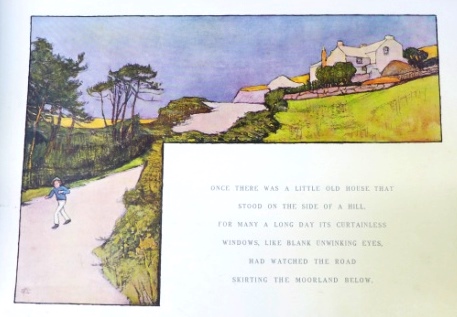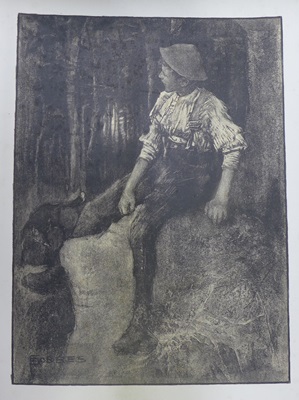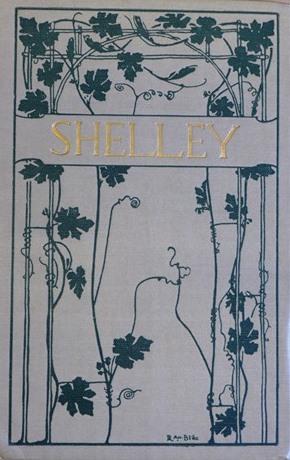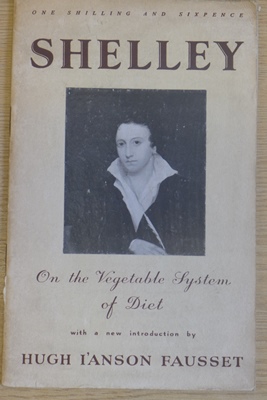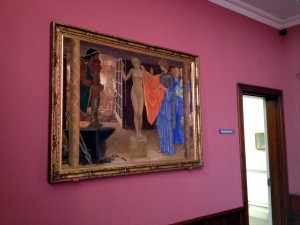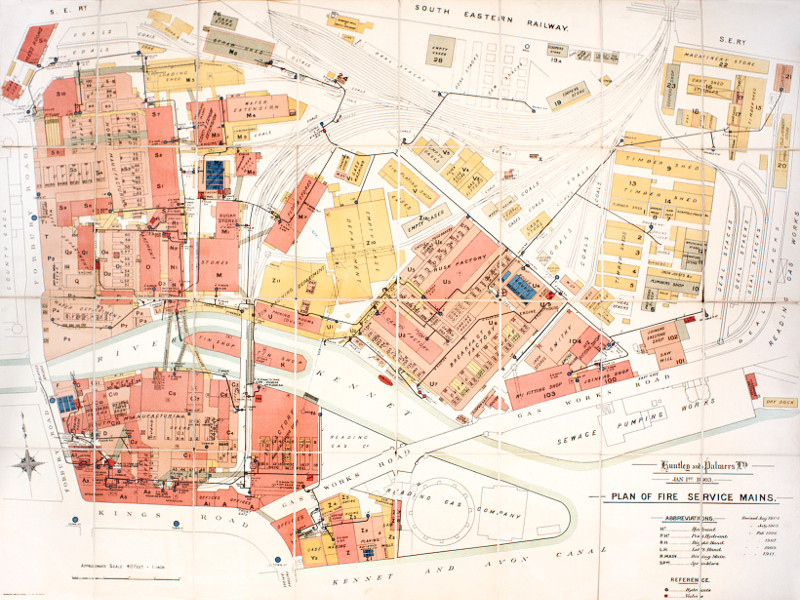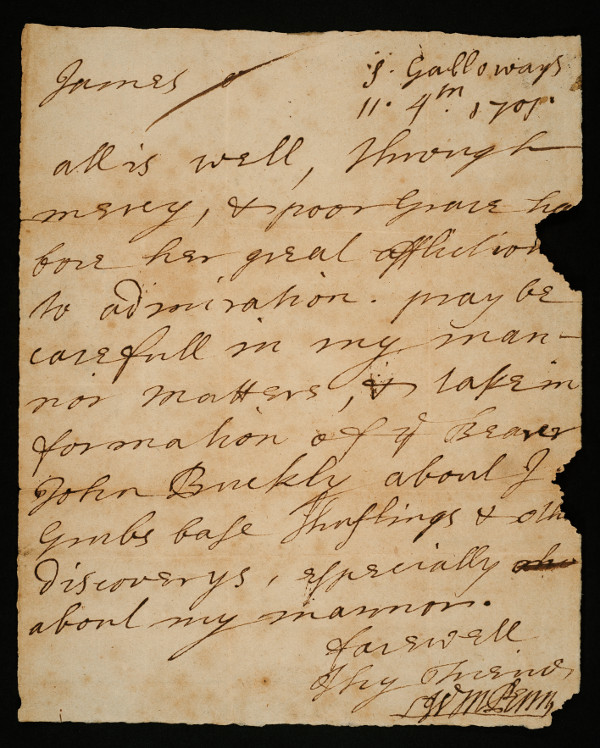Written by Fiona Melhuish, UMASCS Librarian.
One of our most recent acquisitions for the Children’s Collection will also be one of the largest books in the collection. King Arthur’s Wood, by Elizabeth Stanhope Forbes, measures an impressive 53 x 39 x 4 cms, with a robust hessian binding covering, and would seem almost too big for little hands. However, perhaps its large size is not surprising given that Forbes is better known as an accomplished painter, who was used to working in oils on the larger scale of an artist’s canvas.
King Arthur’s Wood was published in 1904, and was both written and illustrated, with charcoal drawings and watercolour paintings, by Elizabeth Stanhope Forbes. The book, which was created for her son, Alec, is a retelling of the story of Sir Gareth of Orkney from Sir Thomas Malory’s compilation of tales, Le Morte d’Arthur. It tells the story of a little boy called Myles who wanders into a wood and meets the dwarf who accompanied Gareth to King Arthur’s court, and who tells the boy of Gareth’s adventures. The story is also interwoven with episodes from the life of Myles himself.
Elizabeth Stanhope Forbes (1859-1912) was born in Canada, and trained in England and Europe, chaperoned by her mother. In 1882, she moved to the artist colony at Pont-Aven in Brittany where she experimented with en plein air painting. In 1885, she and her mother moved to Newlyn, and later to St Ives where she met and married the painter Stanhope Forbes. In 1899 the couple founded the Newlyn Art School, and later Elizabeth was dubbed “the Queen of Newlyn” for her work with the art colony and in recognition of her status as a leading woman artist of her day. Her work largely focused on women, children and landscape, and was influenced by French realism and its subject matter of rural peasants and farming life. This influence can be seen in the illustration from King Arthur’s Wood shown below. Elizabeth was also influenced by the work of friends such as the artists Walter Sickert and James Abbott McNeill Whistler. Many examples of her work can be seen at the Penlee House Gallery and Museum in Penzance, Cornwall.
The book, which is published by Simpkin, Marshall, Hamilton, Kent and Co. of London, was printed by Edward Everard of Bristol, and the verso of the title-page of the book bears his beautiful Art Nouveau-style printer’s device [shown below]. Everard was a founder member of the Bristol Master Printers’ & Allied Trades’ Association, who sought to continue the fine printing tradition that began with the master printer Gutenberg and was revived by William Morris and the Kelmscott Press. The impressive Art Nouveau-style facade of Everard’s printing works, designed by William Neatby of Doulton & Co. in about 1900, is a monument to master printing and features the figures of Gutenberg and Morris. The facade [shown below image of printer’s device] can still be seen today in Broad Street in Bristol.
Everard sought to combine modern technological advances with the principles of fine printing exemplified by the Kelmscott Press and the nineteenth century private press movement. Everard designed his own typefaces, and his work was strongly influenced by Art Nouveau, often enhanced by page decoration in spot colour in soft pastel shades. Everard was an ideal choice of printer for Forbes’s beautifully illustrated book.
This copy of King Arthur’s Wood has been generously donated to us by one of our readers, along with a selection of other fine children’s picture books. The book, along with the rest of the Children’s Collection, is available to view on request in the Special Collections Service reading room.
References
Judith Cook and Melissa Hardie. Singing from the walls : the life and art of Elizabeth Forbes. (Bristol : Sansom, 2000). Available to loan from the 3rd floor of the University of Reading Library (759.2-FOR/COO).
Charles Harvey and Jon Press, A Bristol Printing House: Edward Everard’s Monument to Gutenberg, Morris and the Printer’s Art. Accessed at 08/12/2014 at: http://www.morrissociety.org/publications/JWMS/SP94.10.4.HarveyPress.pdf


